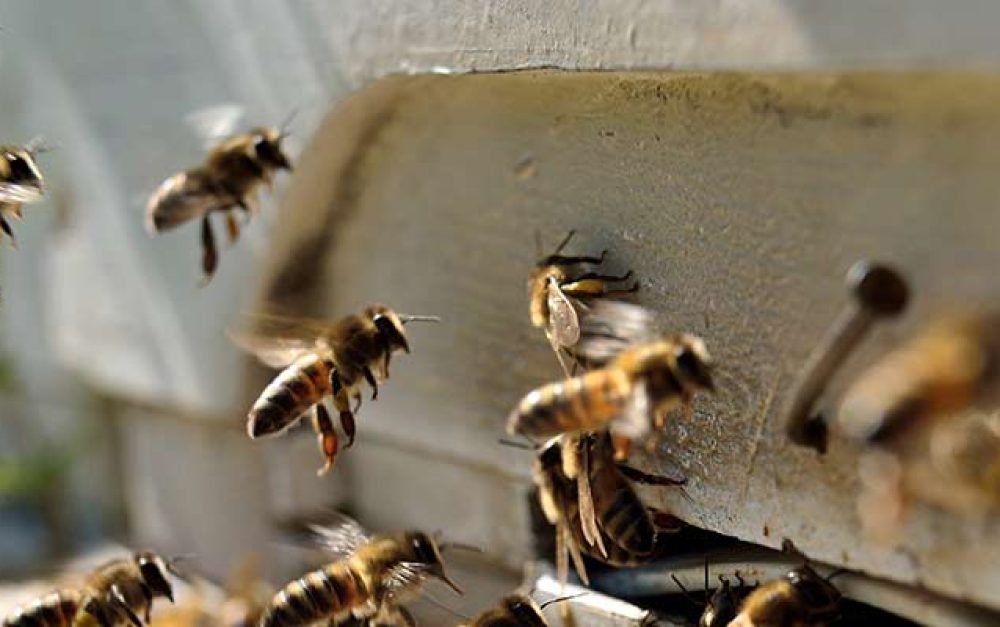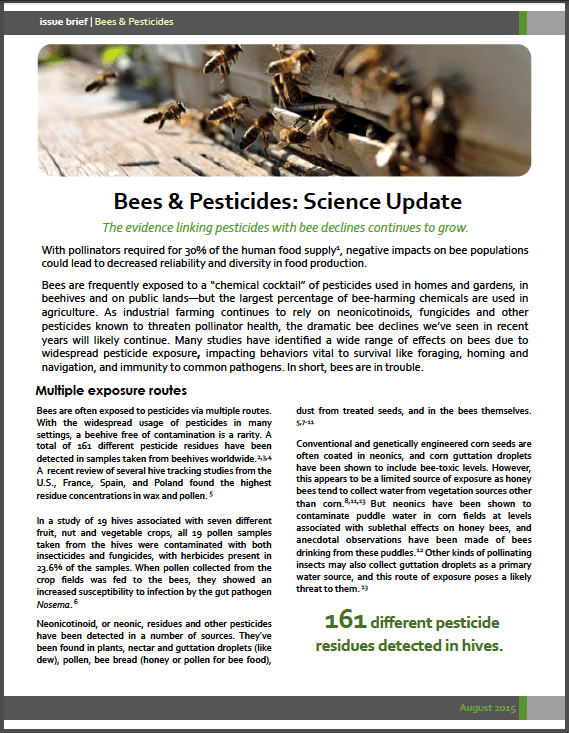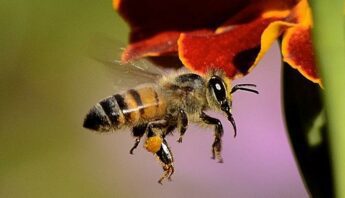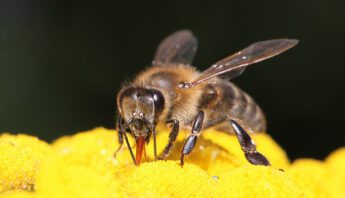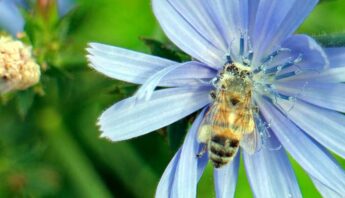With pollinators required for 30% of the human food supply, negative impacts on bee populations could lead to decreased reliability and diversity in food production.
Bees are frequently exposed to a “chemical cocktail” of pesticides used in homes and gardens, in beehives and on public lands—but the largest percentage of bee-‐harming chemicals are used in agriculture. As industrial farming continues to rely on neonicotinoids, fungicides and other pesticides known to threaten pollinator health, the dramatic bee declines we’ve seen in recent years will likely continue. Many studies have identified a wide range of effects on bees due to widespread pesticide exposure, impacting behaviors vital to survival like foraging, homing and navigation, and immunity to common pathogens. In short, bees are in trouble.



